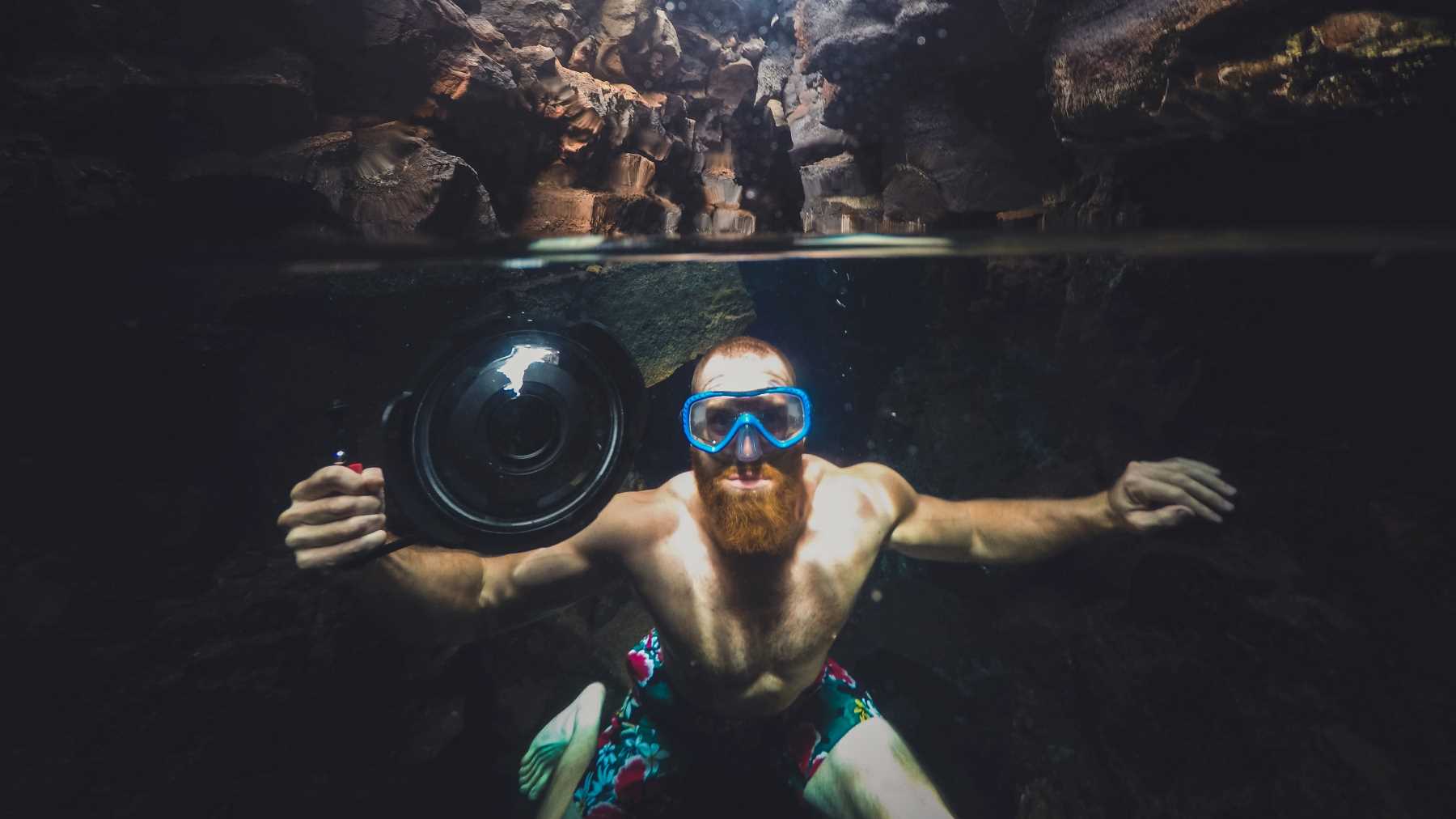
Tips on choosing lenses for your underwater camera
In underwater videography and photography, many use DSLR cameras. This stands for “digital single-lens reflex” cameras and are used with waterproof housings. These types of cameras usually come with a kit lens. In other words, a shorter range lens included in your purchase of the camera body. However, if you’re going to get serious about your underwater photo or video career, you’ll need more lenses. There are various lenses for your underwater camera to consider.
Build professional skills as an underwater videographer on the tropical reefs of Southern Africa
Basic available lenses for your underwater camera
Prime lens
This type of lens has a fixed focal lens. In other words, it cannot zoom in or out on the subject, but remains fixed at a certain distance (such as 20mm, or 100mm). The benefit of this lens is that it’s optimised to capture a subject at that specific distance. This means that if you capture a scene or subject within the prime lens’s fixed distance, the image will be sharper. A prime lens is also more compact than a zoom lens. However, for underwater photography and video, you won’t be able to zoom in if you can’t get close enough to a subject.
Zoom lens
For your underwater camera, a zoom lens comes highly recommended. This lens can zoom in and out of a scene within the range indicated (for example, 18-55mm or 24-105mm). A telephoto lens can go to over 300mm. Although a telephoto lens lets you take photos of smaller or faraway subjects, it is also bulkier. You also need to ensure that your underwater housing is able to accommodate the size of your lens.
Wide-angle lenses
There are two types of wide-angle lenses for your underwater camera to consider. The first type, a fisheye lens, is wider than the rectilinear lens. A fisheye lens gives a curved appearance to the edges of the photo. If you use a fisheye lens, you can get closer to your subject and have sharper close-up photos. For underwater videography, a rectilinear lens is better. This is because it doesn’t distort the footage. With a rectilinear lens, the lines underwater remain straight in your footage. What’s more, it’s easier to light the entire scene that you’re filming.
Macro lenses
This type of lens allows you to take very close and detailed photos and footage of your subject. A macro lens’s focal length lies somewhere between that of a wide-angle and a telephoto lens. These lenses are popular among both underwater photographer and videographers.
There are variations of these basic lens types available in almost all camera brands. For example: Nikon, Canon, Sony and Olympus.
Download FREE eBook featuring 40 proven fundraising techniques to finance your next overseas experiential adventure
What to look at when buying lenses for your underwater camera
Lens speed
A lens with a large aperture is called a fast lens and lets in more light while making the subject sharper. A fast lens is also better for focusing on the subject. For example, a fast lens’s aperture can go up to F1.8 or F2.0. This varies according to the focal length. A lens with a focal length of 50mm might have a maximum aperture of F1.8, and a 200mm could have an aperture of F2.0. These types of lenses are a little more expensive. A slow lens doesn’t have a large max aperture but is usually lighter and cheaper.
Focal length
This is the distance at which the lens is able to focus. While a prime lens has a fixed focal length, a zoom lens can focus on a subject anywhere within the range of its minimum and maximum focal length. For example: 35-105mm. These focal lengths and ranges vary from lens to lens. You can choose a lens according to the type of subjects you’d like to film or photograph. According to this, you can determine how much “distance” you’ll need to capture them optimally.
Field of view
Often referred to as FOV, the field of view is the width of the scene that the lens can pick up. This field of view is measured in degrees. A large field of view is 180 degrees (such as a 10mm fisheye lens). On the other hand, a narrow field of view is 10 degrees (like you would find on a telephoto lens). Any lens on a cropped-sensor camera will have a narrower FOV than the same lens on a full-frame camera.
Maximum magnification
If a lens has a magnification of 1:1, it means that the image is the same size as the camera’s sensor. If it has a magnification of 1:5, it means the image will be five times the size of the camera’s sensor. This means the magnification is less – only a fifth of the scene is visible in the picture instead of the whole. The ideal magnification found in most macro lenses is 1:1 or 1:2.
In order to buy the correct lenses, make sure about the type of underwater video or photo you want to take. Then, ensure that the lenses are the best ones for those specific subjects and scenes. When choosing lenses for your underwater camera, you need to invest in the ones you’ll use the most and the ones that will benefit you most as a photographer or videographer. Do not spend more money than you need to. But remember: top-quality lenses make better photos, even if you have an average camera body.
Build some practical experience in underwater photography or videography. Check out our month-long experiential training programs in Mozambique and South Africa.

Blogger Profile - Rouxne van der Westhuizen
Rouxne has an Honours degree in journalism and media studies. She specialises in wildlife conservation writing, travel journalism and blogging.
Kickstart your wildlife media career!
Find your perfect wildlife media speciality program




